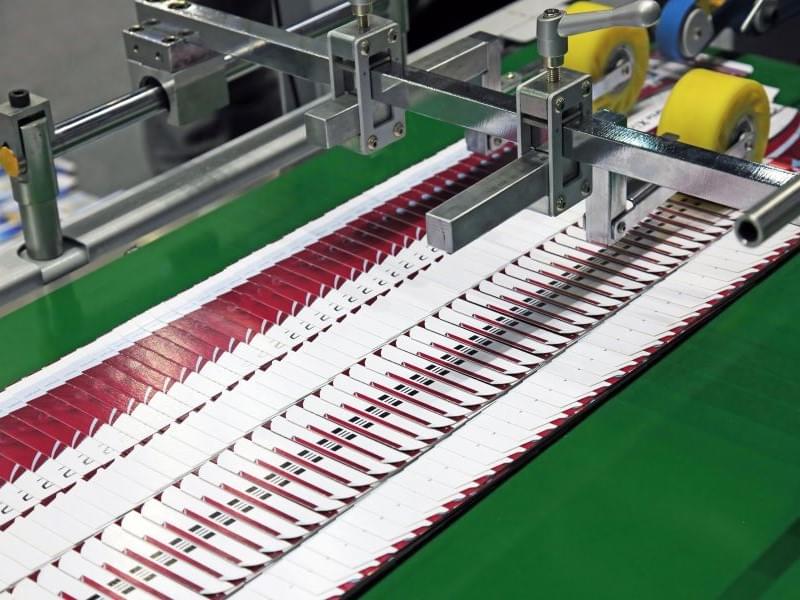There is a major focus on improving the sustainability of printed packaging that is affecting every aspect of the packaging supply chain. The developing trends in sustainability include changes in design, the materials used, the processes employed in printed packaging production and the fate of post-consumer use packaging, according to new report from Smithers,
The Future of Package Printing to 2027. The combination of sustainability and pandemic-related changes in retail are driving growth in the market.
The global print for packaging sector is valued at $473.7 billion in 2022, with a print volume of 12.98 trillion A4 equivalents. It has grown from $424.2 billion in 2017, and will develop further reaching $551.3 billion in 2027, a CAGR of 3.1% between 2022-27, according to the latest statistics developed by Smithers. The sector saw a significant decline in 2020 due to the impact of the COVID-19 pandemic, which adversely affected economic output and altered patterns of consumption. However, packaging output recovered strongly in 2021, growing 3.8% year-on-year in value reflecting lowering of global restrictions and improving economic conditions.
The growth in demand for printed packaging is supported by demographic factors. Global population is increasing steadily due to improvements in healthcare, and higher standards of living which have led to lower child mortality, increasing longevity, and an expanding middle class.
The changing retail landscape
The retail landscape is currently changing with traditional brick and mortar retailers under considerable strain. These outlets are seeing pressure from low-cost “discount retailers”, with the rise of e- and m-commerce alternatives which are growing as a share of the total retail expenditure. Many brands are now exploring and implementing direct-to-consumer strategies, taking all the value of the sale and developing a direct relationship with the consumer. Digitally printed packaging could help this trend and there will be less pressure on price than for traditional bulk supply of labels and packaging, at least in the early time of the change.
Evolving e-commerce
Emerging direct-to-consumer brands are benefitting from e-commerce as the barriers to entry are low. To get established, these brands are reaching and maintaining customers with new packaging designs that are pushing digital print adoption in packaging. Printed packaging also benefits from the need for more transit packaging supporting e-commerce deliveries.
Global e-commerce sales experienced huge growth during the COVID-19 pandemic. The sector will continue to expand to 2027 albeit at a slower pace. Consumer analysts are reporting that brand loyalty has been eroded as lockdowns and shelf shortages force many consumers to try alternatives, boosting lower cost alternatives and new craft brands. Demand for lower cost alternatives will increase over the near to mid-term because of the cost-of-living crisis arising from the war in Ukraine.
The advent of q-commerce
The q-commerce (quick commerce) trend will develop significantly over the coming five years, with the expansion of delivery by drone. In 2022 Amazon Prime Air will trial drone delivery using the company’s specialist drones in Lockeford, California. Amazon’s drone system is designed to self-fly, without visual observers, using onboard sense-and-avoid systems to support safety in the air and when landing. The impact of q-commerce will be to increase the popularity of e-commerce and drive further demand for e-commerce related printed packaging.
Market-impacting legislation
There are major initiatives at the inter-governmental level to promote a transition to a low carbon economy, such as the EU Green Deal, that will have significant impacts across all industrial sectors, including print for packaging. Over the coming five years, the sustainability agenda will be the biggest driver of change across the packaging sector.
Further, the role of plastic packaging is under scrutiny as plastic packaging volumes are high and recycling rates are lower than for other packaging materials such as paper and metal-based packaging. This is driving the creation of new and innovative packaging structures that are easier to recycle. Major brands and retailers have also committed to significantly reduce their use of virgin plastic.
Directive 94/92/EC on Packaging and Packaging Waste states that all packaging in the EU market be reusable or recyclable by 2030. The Directive is currently under review by the European Commission, with the aim of reinforcing the mandatory requirements for packaging used in the EU market.
